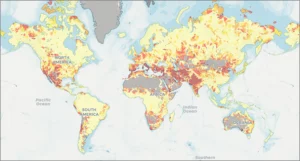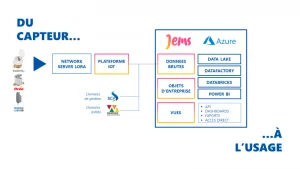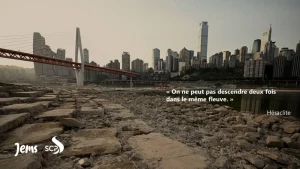Can data help get through the climate crisis?
July 2022. The driest month ever recorded by météo France since 1958 (date of the beginning of the history). Fires, extreme heat waves, almost no rainfall… We are in the middle of a climate crisis. Despite this, projects are emerging to help us meet our water needs. And these are based on the concept of data patrimony with an “industrial” type of operation in order to quickly produce use cases. Because the urgency is there.
Back to the issues of water and its preservation
Water is at the heart of the health and food security issues that condition the well-being and peaceful coexistence of populations around the world. 78% of human activities depend on water: domestic, industrial, irrigation and livestock uses with and without consumption. However, as we all know, water stress, i.e. the ratio between total water withdrawals and available renewable surface and groundwater reserves, is constantly increasing.
As we can see with the “Aqueduct” tool of the WRI (World Research Institute), a considerable number of countries are under water stress. These are the red and orange zones where competition for water availability is becoming strong. Including Europe. Including France.
Water stress can thus lead to human and commercial conflicts, especially between industrial and agricultural users who depend on water supply for their production.
.

Who uses the water?
Water is a resource that is shared between several actors: agriculture, industry, local authorities and domestic use. If we have to adapt our practices to avoid water stress, data becomes fundamental. SAP (Security Assurance Plan) is not a simple way to monitor usage, but to understand, anticipate, predict and adapt our uses. This is where the concept of data patrimony takes on its full importance.
The JEMS project and Société Canal de Provence
JEMS is a data industrialist. We build factories to generate use cases from all the company’s data. This data constitutes a real patrimony that must be preserved.
The JEMS & SOCIETE CANAL DE PROVENCE project, which lasted 10 months, mobilized 4 to 6 people in a true partnership. The objective was to deploy a DATA-IOT factory that mixes the best of both worlds. On one side, data collected by 70 000 sensors, mixed with weather data and internal data. On the other hand, an Azure cloud platform to receive and operate this data in order to produce on-demand use cases in a truly industrial approach. The advantage? No technical debt and a delivery to market three times faster than any datawarehouse solution.

In conclusion
This model has made it possible to create use cases for networks such as remote readings and emergency management, as well as services for individuals – consumption monitoring – or for farmers with personalized watering bulletins.

Like a river, which always seems the same but where the water is never the same, we change, as well as things. This is why we cannot live the same thing twice, says the philosopher Heraclitus. The world is in motion and in perpetual change.
At JEMS we also believe that we can’t go back to the way things were and that human activity has deregulated the climate. But we bring our stone to the building. The data and the importance of using this patrimony can help us to better regulate our behavior and change our habits.
Matthieu LENTZ – CMO JEMS

To go further, our case study dedicated to the Société du Canal de Provence is available:
Creating new services in water delivery